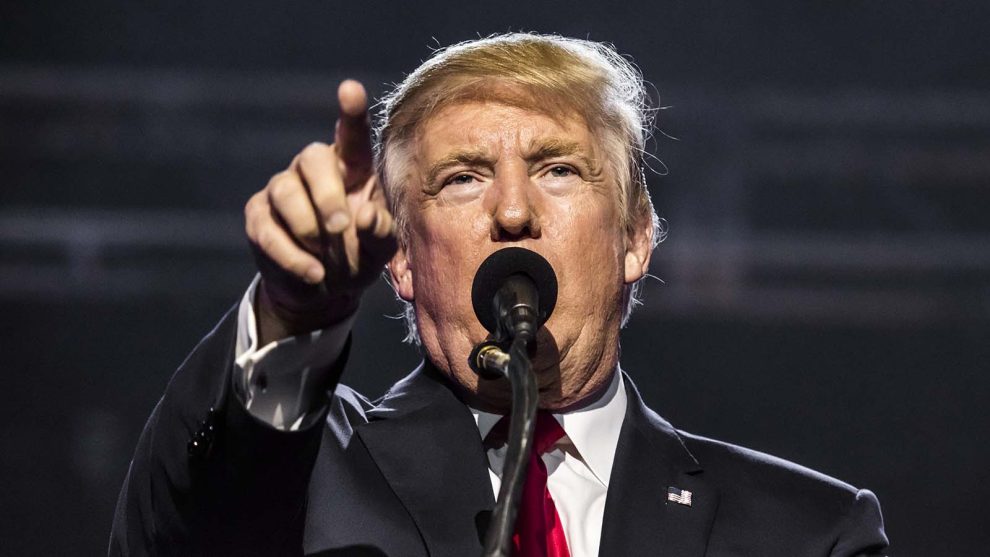
The abnormal nature of today’s market and world … sky-high valuations … contradictions in who’s buying and selling … Louis Navellier’s plan for post-election chaos
Number of times when both gold and the S&P 500 are up 25% in the same year?
Zero.
SPY up 24% or so this year with gold up 33%.
That came from quant investor and Cambria Investment Management CIO Meb Faber last week. His research points us toward one big takeaway for today…
We’re in an abnormal market.
Now, at the same time, you’re probably having a fantastic year in your portfolio. If so, congrats. I hope even bigger returns are on the way for you.
But we need to maintain an awareness of how unusual things are today – for the investment markets, our economy, geopolitics, you name it. Today, let’s walk through some of the abnormalities so you can see for yourself how upside-down things are.
Let’s begin with some conflicting buying/selling behavior in the market
On one hand, U.S. executives are selling their holdings in their own companies. As you can see below, the insider “sell-to-buy” ratio just hit its highest level since 2021.

This activity is not a ringing endorsement of how executives with insider information feel about their companies looking forward.
On the other hand, here in October, hedge funds have been buying U.S. stocks at the fastest pace of 2024.

What about valuations and “cash on the sidelines”?
As we noted last week, U.S. stocks are now the most overvalued they’ve ever been according to the “Buffett Indicator.”
For any readers less familiar, the Buffett Indicator compares the total market capitalization of a country’s stock market to its Gross Domestic Product (GDP). It’s commonly used to assess whether a stock market is overvalued or undervalued relative to the size of the economy.
As to how to interpret the Buffett Indicator, in his 2001 interview with Fortune, Buffett said:
If the ratio approaches 200%—as it did in 1999 and a part of 2000—you are playing with fire.
With this context, here’s Barchart from last week:
Warren Buffett Indicator hits 199%, the highest level in history, surpassing the Dot Com Bubble and the Global Financial Crisis.
Meanwhile, according to Global Markets Investor, the S&P’s price to book ratio is now 5.2X – the most on record and in line with the 2000 Dot-Com bubble burst.
Even if we exclude the Magnificent 7 stocks, the price-to-book ratio is 4.2X. This is close to a record.

Turning our attention to cash, some investors are promoting the idea that “cash on the sidelines” will continue fueling this bull market.
Although there is a chunk of cash on the sidelines, as a percentage of the market’s total capitalization, that chunk isn’t all that noteworthy, let alone big enough to be a bullish driving force for quarters to come.
Here’s Charles-Henry Monchau, CIO at the Syz Group with the data:
Cash allocations are lower today than even at the peaks of the tech and housing bubbles. There is absolutely no fear in this market…
Here’s the problem. If everyone is fully vested, where does the new money come from to keep the market going higher?

If we look internationally, things are equally abnormal
It hasn’t received a great deal of attention in the headlines, but last week, there was a summit of the BRICS nations in Kazan, Russia.
Originally, the BRICS included Brazil, Russia, India, China and South Africa, but it has now expanded to include Iran, Egypt, Ethiopia, the United Arab Emirates and Saudi Arabia. Meanwhile, Turkey, Azerbaijan and Malaysia have formally applied to become members.
So, what’s abnormal about this?
Well, Chinese President Xi Jinping said that the BRICS must create a new global “system,” which is basically a shot across the bow for dollar hegemony.
From Jinping:
There is an urgent need to reform the international financial architecture, and BRICS must play a leading role in promoting a new system that better reflects the profound changes in the international economic balance of power.
And here’s the AP News with Russia’s take:
Russia has specifically pushed for the creation of a new payment system that would offer an alternative to the global bank messaging network SWIFT and allow Moscow to dodge Western sanctions and trade with partners…
Speaking at the summit, Putin accused the U.S. of “weaponizing” the dollar and described it as a “big mistake.”
Then, we have JPMorgan CEO Jamie Dimon saying that we’re already in World War III.
Here’s MarketWatch:
(Dimon) lamented the wars in Ukraine and the Middle East, and the growing cooperation between U.S. adversaries including Russia, China, North Korea and Iran.
“They are clearly talking about dismantling the system” set in place by the U.S. and its allies after World War II, which Dimon credits as spawning an era of unprecedented global economic growth.
“The risk is extraordinary,” he said. “World War III has already begun. You already have battles on the ground being coordinated in multiple countries.”
He went on to say that U.S. economic concerns are “teeny compared to the geopolitical situation we face.”
Then, we have the presidential election
Vice President Kamala Harris and former president Donald Trump are in a dead heat.
And while partisan economic forecasts are lauding their preferred candidate while demonizing the other, the reality is that both Harris and Trump will be awful for our national debt and fiscal deficit. Arguing that one of them is dramatically worse than the other (from a spending/debt perspective) is a bit like claiming you’ll be less wet if you cannonball into a small backyard swimming pool than an Olympic-sized swimming pool.
As we covered last week, some of the most famous and successful investors alive today are greatly concerned about our nation’s debt, regardless of who wins in November.
Here’s CNBC:
Billionaire hedge fund manager Paul Tudor Jones is raising alarms about the U.S. government’s current fiscal deficit and the increased spending promised by both presidential candidates, saying the bond market may force the government’s hand after the election in addressing it.
“We’re going to be broke really quickly unless we get serious about dealing with our spending issues,” Jones told CNBC’s Andrew Ross Sorkin on Tuesday…
[Jones] said he was worried that the government spending could cause a big sell-off in the bond market, spiking interest rates…
“The question is after this election will we have a Minsky moment here in the United States and U.S. debt markets?” Jones said, referring to shorthand for a dramatic decline in asset prices.
“Will we have a Minsky moment where all of a sudden there’s a point of recognition that what they’re talking about is fiscally impossible, financially impossible?,” he continued.
This is the same question that legendary investor Louis Navellier and our geopolitical expert Charles Sizemore have been asking…
More alarming is that they believe that most investors aren’t ready for the answer.
Here’s Louis:
Most folks are simply preparing for a repeat of the contested election results of 2020. The truth is unlike anything you’re prepared for…
In the early hours of November 6th — the day after the election — we’re predicting that uncertainty and political strife will begin…
The day AFTER the election will be a critical date that could cause stock market chaos for everyday investors.
To help investors prepare for what they see coming, Louis and Charles are sitting down tomorrow night at 7 PM ET to discuss “The Day After.”
You’ll get their investment roadmap for how to put election volatility in your corner. Back to Louis:
I’ll be showing folks how to navigate the volatility I see coming and turn it into profits by using my proprietary computer-based investment system.
I’ll even give away a post-election trade for free. It’s designed to pay off no matter who wins the election.
By the way, it was nearly one year ago (last November) that Louis and Charles predicted that Joe Biden would be replaced on the presidential ballot. Tomorrow night, you’ll get their newest prediction for what will happen immediately after the election.
You can reserve your seat for tomorrow night at 7 PM ET right here.
Wrapping up, yes, we’re in a bull market, and you’re likely having a banner year…
So, we want to take advantage of this momentum for as long as we can.
But as I hope you saw today, these are not normal times.
From record-high stock market valuations, to geopolitical risks, to election chaos, the potential for volatility is sky high. Make sure that you have a plan in place to protect your wealth if today’s bullish conditions suddenly turn. For more on Louis’ and Charles’ plan, click here to join them tomorrow.
Have a good evening,
Jeff Remsburg





